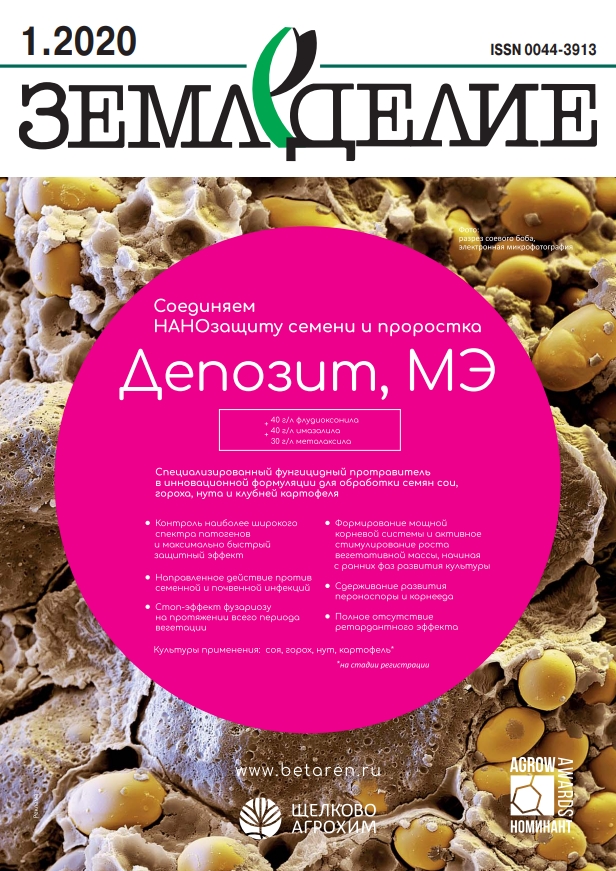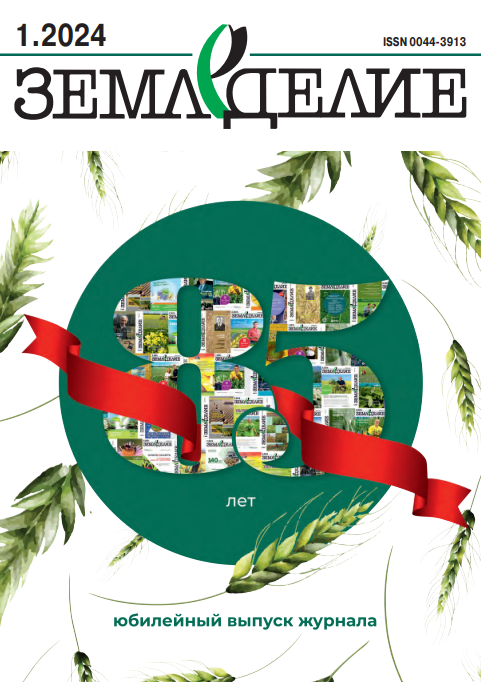Органическая мульча и No-till в земледелии: обзор зарубежного опыта*
doi: 10.24411/0044-3913-2020-10101
УДК 631.51
Д. Г. ПОЛЯКОВ1, кандидат биологических наук, старший научный сотрудник (e-mail: Адрес электронной почты защищен от спам-ботов. Для просмотра адреса в вашем браузере должен быть включен Javascript.)
Ф. Г. БАКИРОВ2, доктор сельскохозяйственных наук, зав. лабораторией (e-mail: Адрес электронной почты защищен от спам-ботов. Для просмотра адреса в вашем браузере должен быть включен Javascript.)
1Институт степи Уральского отделения РАН, ул. Пионерская 11, Оренбург, 460000, Российская Федерация
2Оренбургский федеральный исследовательский центр Уральского отделения РАН, ул. Набережная, 29, Оренбург, 460014, Российская Федерация
*Статья подготовлена по теме НИР Института степи УрО РАН: «Степи России:
ландшафтно-экологические основы устойчивого развития, обоснование природопо-
добных технологий в условиях природных и антропогенных изменений окружающей
среды». № ГР АААА-А17-117012610022-5.
Отказ от технологий возделывания культур, основанных на рыхлении почвы, и переход к природоподобным – мировая тенденция. Для успешного применения No-till обязательно наличие органической мульчи – аналога подстилки из мертвого опада степных растений. Цель обзора – анализ опыта использования органической мульчи для оценки возможности применения технологии No-till в Российской Федерации. Устойчивый эффект от использования этой технологии проявляется при накоплении мульчи определенной массы. Например, для влагосбережения наименьшая ее масса варьирует от 2 до 15 т/га. Дальнейшее увеличение количества мульчи способствует повышению содержания влаги в почве до определенного уровня. Снижение испарения благодаря этой агротехнологии позволяет сократить поливные нормы и бороться с засолением при орошении. С увеличением массы мульчи с 1...2 т/га до 8…10 т/га сокращаются эрозионные потери почвы. Вследствие затенения мульча подавляет рост сорняков – эффективное ее количество составляет 5…10 т/га. Мульча способствует росту содержания органического углерода в верхнем слое и улучшению агрофизических показателей почвы. Эффект технологии No-till проявляется не сразу, а через 4…10 лет, усиливаясь с годами. Почти в 50 % случаях почва остается уплотненной даже после продолжительного применения технологии. Отрицательные примеры использования No-till в большей степени связаны с неоптимальными параметрами органической мульчи, так как часто в опытах их количество зависит только от урожайности выращенных культур. Позитивность мульчирования несомненна. Однако освоение No-till сопряжено с некоторыми рисками. Поэтому залог успеха реализации такой технологии – определение оптимальных параметров мульчи для конкретных почвенноклиматических условий.
Ключевые слова: органическая мульча, природоподобные технологии, No-till, влагосбережение, эрозия, орошение, гербициды, почвенный органический углерод.
Для цитирования: Поляков Д. Г., Бакиров Ф. Г. Органическая мульча и No-till в земледелии: обзор зарубежного опыта // Земледелие. 2020. № 1. С. 3–7. doi: 10.24411/0044-3913-2020-10101.
Organic mulch and no-till in agriculture: a review of international experience
D. G. Polyakov1, F. G. Bakirov2
1Institute of Steppe, Ural branch, Russian Academy of Sciences, ul. Pionerskaya 11, Orenburg, 460000, Russian Federation
2Orenburg Federal Research Center, Ural branch, Russian Academy of Sciences, ul. Naberezhnaya, 29, Orenburg, 460014, Russian Federation
Abstract. The rejection of the cultivation methods based on loosening and their replacement with nature-like technologies is a world trend in crop production. For no-till technology, it is necessary the presence of organic mulch – an analogue of the underlays from the fallen leaves of steppe plants. The purpose of the review is to characterize the experience of organic mulch use to assess the possibility of application of it and no-till technology in the Russian Federation. The steady effect of using this technology is manifested in the accumulation of mulch of a certain weight. For example, for moisture conservation, its smallest mass varies from 2 to 15 t/ha. A further increase in mulch weight helps to increase the moisture content to a certain level. Thanks to this agrotechnology, evaporation is reduced, and it allows reducing irrigation rates and controlling salinization during irrigation. With an increase in mulch mass from 1–2 t/ha to 8–10 t/ha, soil erosion losses also decrease. Due to shading, mulch inhibits weed growth – its effective amount is 5–10 t/ha. Mulch promotes an increase in the content of organic carbon in the upper soil layer and an improvement of the agrophysical parameters of the soil. The effect of no-till technology does not appear immediately, only in 4–10 years, but it intensifies over the years. In approximately 50% of cases, the soil remains compacted even after a considerable period of technology application. Positive experience shows the possibility of regulating this parameter. In our opinion, negative no-till examples are mostly associated with non-optimal parameters of organic mulch for specific conditions, since often in experiments the amount of mulch is not controlled, but depends only on the crop yield. The positive effect of mulching is undeniable. However, the introduction of no-till is fraught with some risks. Therefore, the key to the success of this technology is the determination of optimal mulch parameters for specific soil and climatic conditions.
Keywords: nature-like technologies; notill; moisture conservation; erosion; irrigation; herbicides; soil organic carbon.
Author Details: D. G. Polyakov, Cand. Sc. (Biol.), senior research fellow (e-mail: Адрес электронной почты защищен от спам-ботов. Для просмотра адреса в вашем браузере должен быть включен Javascript.); F. G. Bakirov, D. Sc. (Agr.), head of laboratory (e-mail: Адрес электронной почты защищен от спам-ботов. Для просмотра адреса в вашем браузере должен быть включен Javascript.).
For citation: Polyakov DG, Bakirov FG. [Organic mulch and No-till in agriculture: a review of international experience]. Zemledelije. 2020;(1):3-7. Russian. doi: 10.24411/0044-3913-2020-10101.










